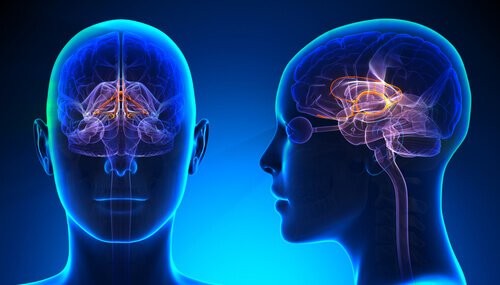Three Differences Between Emotions and Feelings

You have surely confused emotions with feelings more than once. We experience both at the same time, and they prove easy to confuse. But it’s very important to know the difference between emotions and feelings. We must manage each one differently and they don’t generate the same needs.
In this article, we’ll briefly discuss the three main differences between emotions and feelings. This way, you’ll know how to differentiate them in order to improve your emotional intelligence, be more reflective, and avoid regrets.
Emotions and feelings can lead us to do things in the heat of the moment, but if we make an effort to identify and differentiate them, they become easier to modify (Goleman, 1996).
The three differences between emotions and feelings
1. Automatic vs. reason
Emotions mostly originate in the limbic system and the most primitive part of the brain. On the other hand, feelings come from the frontal lobe. In other words, feelings result from abstract thinking. But emotions are innate and genetically determined as the result of evolution. Likewise, although it seems weird, there’s a maximum number of emotions we can have. However, there’s no maximum number of feelings we can have.
In fact, we verbally define feelings, while we define emotions psychophysiologically. Feelings originate from our interpretation of events and sensations. However, emotions come from a nervous system response (sympathetic and parasympathetic).

2. The speed in which they appear and change
Emotions are characterized by being quite immediate. They represent the body’s alarm and survival system. Once we understand what has happened and why we feel one way or another, we refer to feelings and not emotions. In order to have a feeling, it’s necessary to think about what has happened (value the emotion), reflect on how we behaved, and thus begin to elaborate on it psychologically.
Because emotions come and go quickly, our body has another assessment and motivation mechanism: feelings. Feelings represent the remnants of emotions. In fact, one of the main differences between emotions and feelings is that a feeling develops little by little. It can even change and be present for days, weeks, months, or perhaps years.
3. Emotions are very powerful while feelings aren’t as intense
Since emotions are the main alarm and motivation system we’re born with, they’re very intense and powerful. The basic and universal emotions include joy, anger/rage, fear, surprise, and sadness. They always move us to either act or stop acting. In this sense, surprise is a neutral emotion whose function is to help us stay alert and very aware of what’s going to happen.
In the movie Inside Out, we see that emotions always push us to either do something or stop doing something. For example, sadness makes us distance ourselves from others. However, feelings are much more varied and slow. They lead us to reflect on what we can do to stop feeling uncomfortable or unpleasant.

It’s necessary to emphasize that we can manage unpleasant emotions through deactivation techniques and the redirection of one’s attention. On the other hand, sentimentally corrective experiences, Socratic dialogue, and guided reflection help manage feelings. Deactivation and rapid relaxation can also help.
Managing feelings versus emotions
Finally, because there are differences between emotions and feelings, there are also different ways to manage these experiences. While emotions require disconnection (for example, to avoid increasing anger and losing control), feelings need to be heard and redirected.
In any case, it’s possible to both regulate emotions and reinterpret feelings and these things help us have better psychological health (Bigman, Sheppes & Tamir, 2017).
All cited sources were thoroughly reviewed by our team to ensure their quality, reliability, currency, and validity. The bibliography of this article was considered reliable and of academic or scientific accuracy.
- Bigman Y. E., Sheppes, G. & Tamir, M. (2017). When less is more: Effects of the availability of strategic options on regulating negative emotions. Emotion, 17(6), 993-1006.
- Goleman, D. (1996). Inteligencia emocional (4a ed. edición). Barcelona: Kairos.
This text is provided for informational purposes only and does not replace consultation with a professional. If in doubt, consult your specialist.








